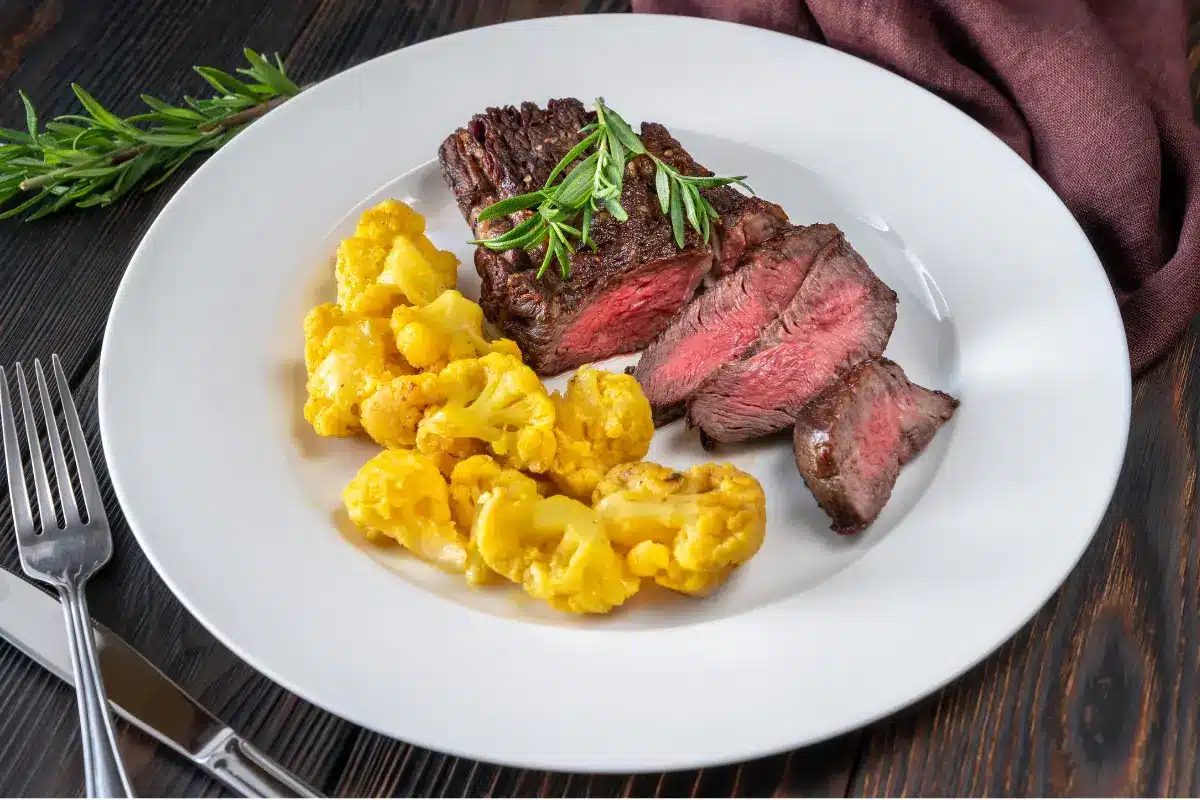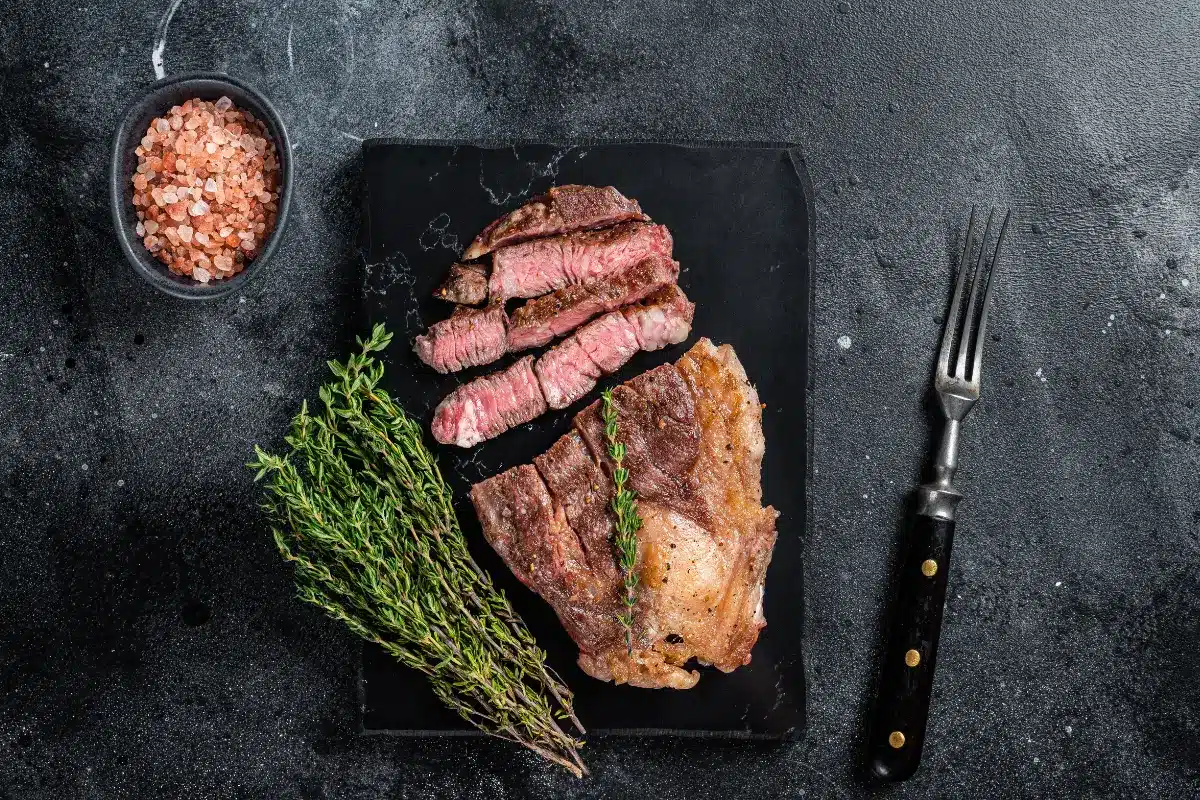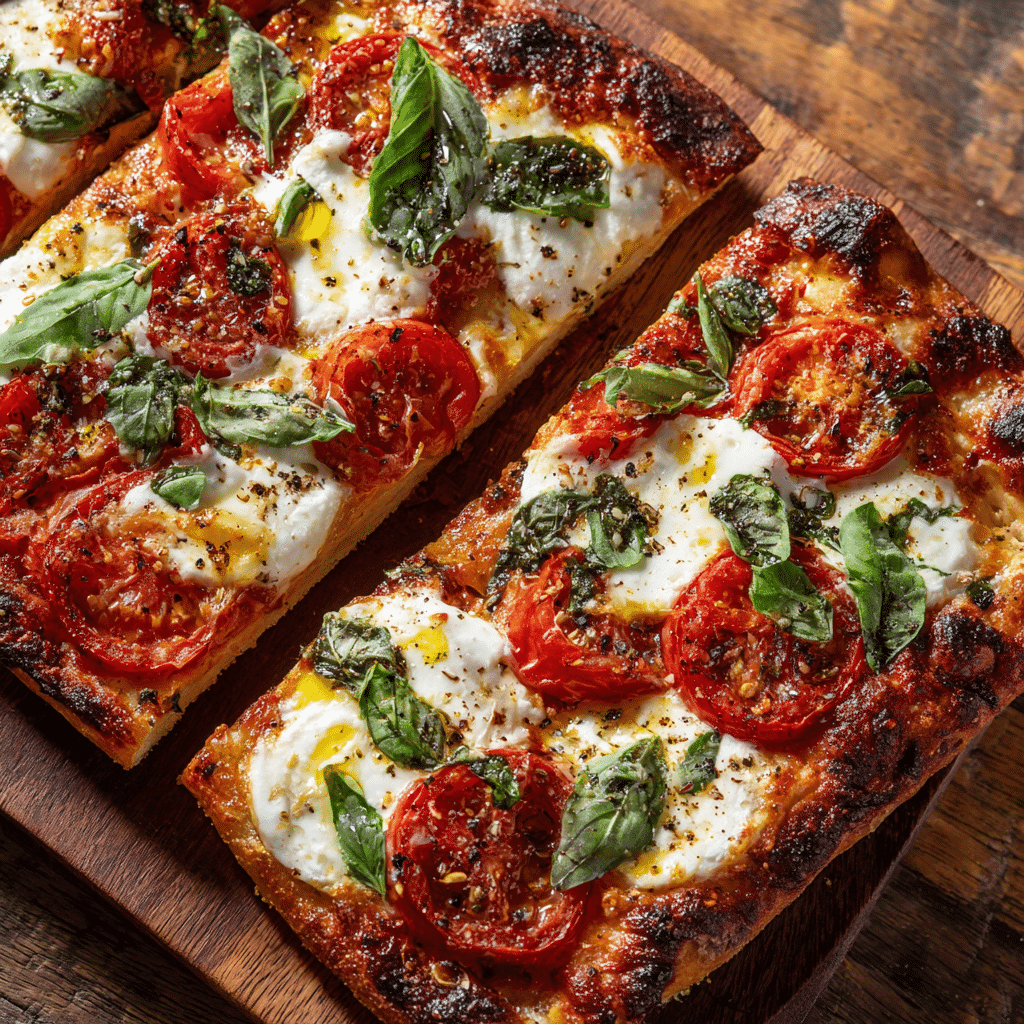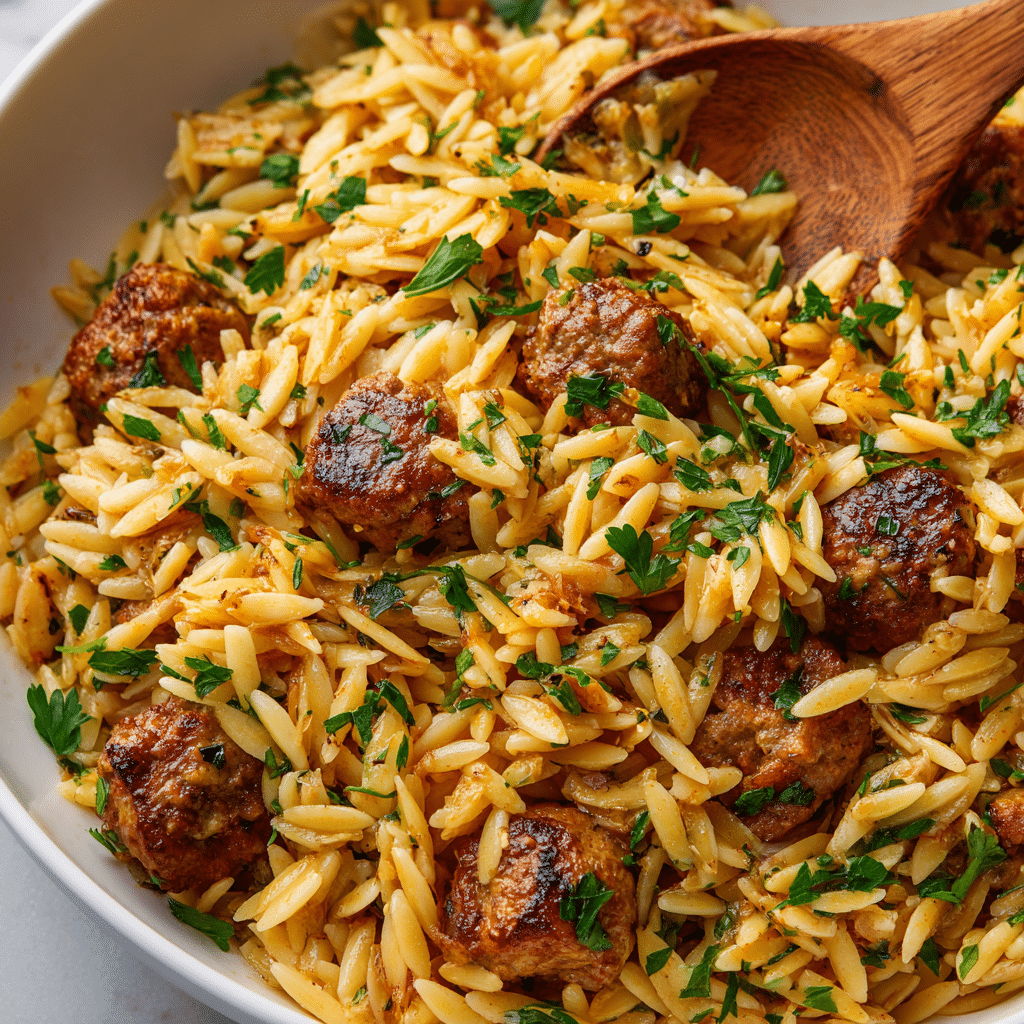Chuck steak might not be the first cut of beef that springs to mind when you’re brainstorming for your next culinary masterpiece, but hold your horses! This humble cut, nestled deep within the shoulder area of the cow, is about to take center stage in your kitchen with a little bit of culinary magic. Bursting with flavor and potential, chuck steak is a versatile player in the world of beef cuts. Through a combination of the right preparation, cooking techniques, and a dash of patience, you’re about to unlock the secrets to transforming this budget-friendly option into a dish that’ll have everyone asking for seconds.
What is Chuck Steak?
Ah, chuck steak—the underdog of the beef world. Located around the neck and shoulder area, it’s a cut that’s worked hard, leading to a mix of fat and connective tissue. But why does this matter, you ask? Well, it’s this very structure that, when treated right, gifts the meat its rich flavor and potential for tenderness.
Why Choose Chuck Steak for Your Next Meal?
Opting for chuck steak isn’t just about being kind to your wallet; it’s about exploring the depths of flavor that beef has to offer. This cut is perfect for a myriad of cooking methods, from slow cooking to grilling, each method unlocking a unique taste and texture profile. Moreover, choosing chuck steak invites you to delve into the art of cooking, encouraging techniques that bring out the best in tougher cuts of meat. So, why not embark on a culinary adventure that promises delicious rewards while keeping your budget in check?
Preparation Basics chuck steak
Before diving into the heat of cooking, let’s lay the groundwork with some essential prep. Getting your chuck steak ready is a cinch with the right ingredients and tools at hand.
Ingredients List
For a mouthwatering chuck steak, gather the following:
- Chuck steak (1 pound)
- Olive oil (2 tablespoons)
- Kosher salt (1 teaspoon)
- Ground black pepper (½ teaspoon)
- Garlic powder (½ teaspoon)
- Onion powder (½ teaspoon)
- Thyme (1 teaspoon, dried)
- Rosemary (1 teaspoon, dried)
This simple yet effective blend of herbs and spices will elevate your chuck steak from good to “Can I have seconds?”
Necessary Kitchen Tools
Equally important as the ingredients is having the right tools for the job. Ensure you have:
- A heavy-duty skillet or grill pan
- Meat thermometer
- Tongs
- Aluminum foil (for resting the steak)
Pre-Cooking Preparation
First things first, let your chuck steak come to room temperature, about 20 to 30 minutes before cooking. This step is crucial for even cooking. Meanwhile, why not use this waiting period to get your spices and tools lined up? It’s all about maximizing flavor and minimizing stress.
Once your steak is room-temperature, pat it dry with paper towels. Moisture is the enemy of a beautiful sear, so let’s show it the door. Next up, rub that steak with olive oil—this not only helps the seasoning stick but also promotes a fantastic crust. Speaking of seasoning, now’s the time to generously apply your mix of salt, pepper, garlic and onion powder, and dried herbs. Every nook and cranny should be covered, ensuring every bite is as flavorful as the last.
With your steak seasoned and tools at the ready, you’re poised to move on to the cooking stage, where the real magic happens. Stay tuned, and keep those taste buds on standby!
Cooking Techniques
With your chuck steak prepped and ready, it’s time to turn up the heat and get cooking. The beauty of this cut lies in its versatility. Whether you’re grilling, pan-searing, slow cooking, or oven roasting, each method unlocks a treasure trove of flavors and textures. Let’s dive into these techniques to ensure your chuck steak is nothing short of sensational.
Grilling the Perfect Chuck Steak
Grilling imbues the steak with a smoky essence that’s hard to beat. Preheat your grill to a high heat, aiming for about 450°F to 500°F. Place your steak on the grill and let it sizzle undisturbed for about 5 to 6 minutes per side for a medium-rare finish. Remember, the key to a great grill mark is patience—resist the urge to move the steak around. Once grilled to perfection, let it rest under a foil tent. This step is crucial; it allows the juices to redistribute, ensuring every slice is as juicy as can be.
Pan-Searing for a Juicy Interior
For those without a grill, pan-searing in a heavy skillet offers a fabulous alternative. Heat your skillet over medium-high heat, and once hot, lay your steak in. The sizzle should be music to your ears. Cook for about 4 to 5 minutes on each side for medium-rare, letting the crust develop beautifully. As with grilling, a rest post-sear is non-negotiable. Resting ensures that when you do slice into your steak, it’s to a chorus of oohs and ahhs, not a puddle of escaped juices.
Slow Cooking for Tenderness
Chuck steak’s high connective tissue content makes it ideal for slow cooking. This method breaks down those tough fibers, leaving you with fork-tender meat. Simply season your steak, sear it on both sides to develop flavor, and then transfer it to your slow cooker with your choice of broth and vegetables. Cook on low for about 8 hours. The result? A steak so tender, it practically melts in your mouth.
Oven Roasting
Oven roasting is yet another splendid option, especially when aiming for a more controlled cooking environment. Preheat your oven to 375°F, sear your steak on the stove top first for that essential crust, and then transfer it to the oven. Cook to your desired doneness, usually about 10-15 minutes for medium-rare, depending on thickness. Again, let it rest before carving to keep all those delectable juices where they belong.
Each cooking method has its charm, turning the humble chuck steak into a dish worthy of the spotlight. Experiment with these techniques to find your favorite or mix it up depending on the occasion. Up next, we’ll delve into flavor enhancements that will take your chuck steak to new culinary heights. Stay tuned!
Flavor Enhancements
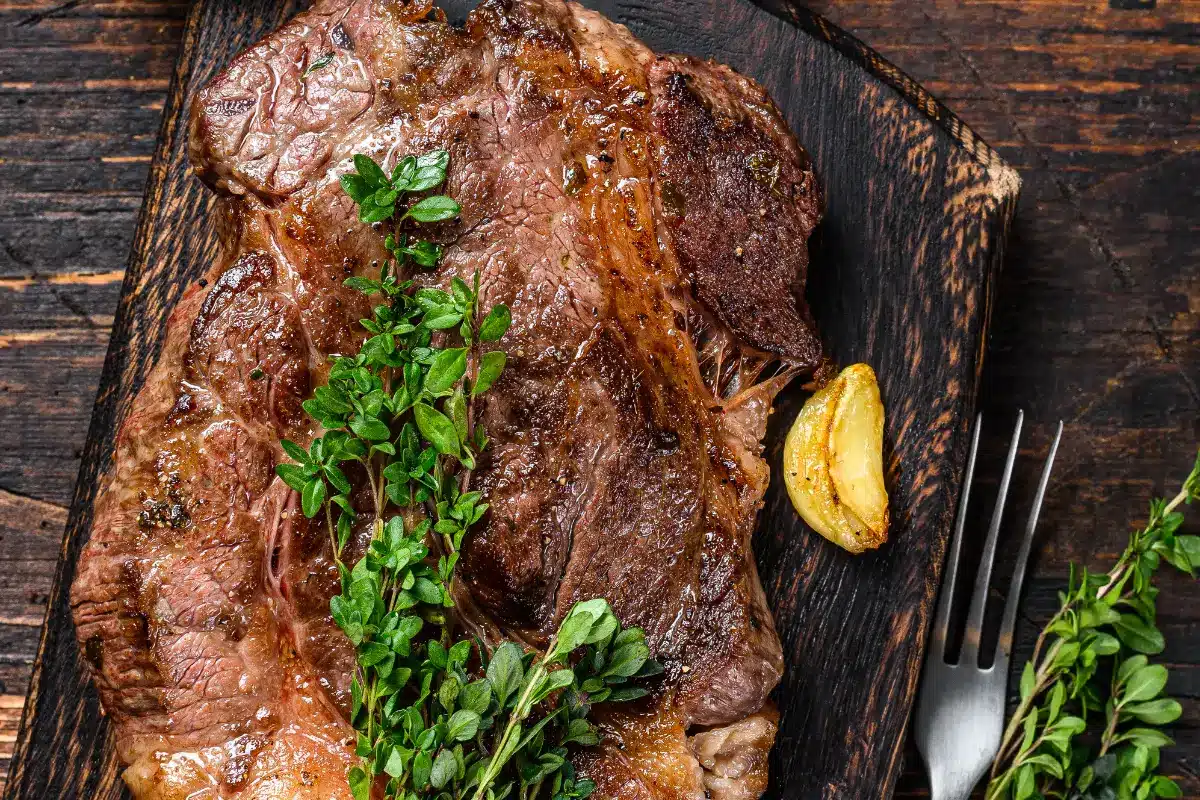
Ah, we’ve arrived at the tantalizing world of flavor enhancements—a realm where chuck steak can truly shine with a bit of creativity and know-how. Enhancing the flavor of your steak isn’t just about adding more; it’s about adding smart. From marinades and rubs to herbs and spices, let’s explore how you can elevate your chuck steak from the ordinary to the extraordinary.
Marinades and Rubs
Marinades do double duty; they not only infuse your steak with flavor but also tenderize it, making them perfect for a cut like chuck. A simple marinade can be as easy as olive oil, soy sauce, garlic, and a dash of lemon juice. Let your steak bathe in this mixture for at least a few hours, or even overnight, in the fridge. The acidity from the lemon juice gently breaks down the fibers, ensuring each bite is tender and loaded with flavor.
Rubs, on the other hand, are your go-to for creating a delicious crust that’s packed with taste. Combine kosher salt, black pepper, onion powder, garlic powder, and a mix of your favorite dried herbs like rosemary and thyme. Pat your steak dry and massage this blend onto every inch. As the steak cooks, the rub transforms into an irresistible crust that’s full of character.
Herbs and Spices for Chuck Steak
Don’t underestimate the power of herbs and spices. Fresh rosemary, thyme, and even a sprig of lavender can introduce a subtle yet complex aroma to your steak. Finely chop these herbs and sprinkle them over your steak as it rests. They’ll gently warm up from the steak’s residual heat, releasing their oils and perfuming your dish with their delightful essence.
When it comes to spices, a little goes a long way. Smoked paprika can add a hint of smokiness, while a pinch of cayenne pepper brings a kick that can awaken all the flavors. Experiment with combinations that speak to you, finding that perfect blend that makes your taste buds dance.
Sauce Pairings
Finally, let’s talk sauces—a well-chosen sauce can tie all the elements of your dish together, creating a harmonious plate that sings. A simple chimichurri, with its vibrant herbs and tangy vinegar, can cut through the richness of the steak, offering a refreshing contrast. For something with a bit more body, a mushroom sauce enriched with a touch of nutritional benefits of chuck steak can be a hearty companion, elevating your steak to new heights of deliciousness.
Embracing these flavor enhancements allows you to tailor your chuck steak to fit any palate or occasion. With these tips in your culinary arsenal, you’re well on your way to serving up a steak that’s not just cooked but crafted. Stay tuned as we move on to presentation and serving tips that will ensure your chuck steak isn’t just tasty but also a feast for the eyes.
Serving and Presentation Tips
Ah, the final touches—serving and presentation. After meticulously selecting your chuck steak, mastering the cooking technique, and artfully crafting the flavors, it’s time to plate your masterpiece. The presentation is not just about aesthetics; it’s about enhancing the dining experience, making each bite more inviting and enjoyable. Let’s explore how to serve up your chuck steak with style and substance.
Plating Ideas
First impressions count, and the same goes for food. Start with a warm plate; this simple trick keeps your steak hot, ensuring that first bite is as perfect as the last. Lay your steak as the centerpiece, sliced against the grain to showcase its tenderness and make it easy to eat. Slicing your steak not only reveals the perfectly cooked interior but also allows the flavors and juices to mingle on the plate, adding both texture and taste.
Consider the color and contrast. A drizzle of bright, herby chimichurri or a rich, golden mushroom sauce can not only add a pop of color but also introduce complementary flavors that elevate the overall dish. Surround your steak with a few strategically placed side dishes. A heap of roasted baby potatoes or a bundle of asparagus adds both visual appeal and a delightful variety of textures and tastes.
Side Dishes Recommendations
The right side dishes can transform your chuck steak from a simple meal to a feast. Opt for sides that balance the richness of the meat. For a fresh contrast, consider a crisp, green salad dressed lightly with vinaigrette. Its acidity and crunch offer a refreshing counterpoint to the meat’s depth.
For something heartier, roasted root vegetables or a creamy mashed potato can serve as a comforting base that complements the steak’s robust flavors. Not only do they add substance, but their earthiness harmonizes beautifully with the steak’s savoriness.
Grilled vegetables are another fantastic option. They not only share the steak’s grilled essence but also introduce a slight char that echoes the steak’s crust, bringing unity to the dish.
By considering these presentation and serving tips, you ensure that your chuck steak dish is a feast not just for the palate but for the eyes too. Remember, eating begins with the eyes, and a well-presented plate sets the stage for a memorable meal. Stay tuned as we delve into advanced tips and tricks to further refine your chuck steak cooking skills in the next part.
Advanced Tips and Tricks chuck steak
Mastering the art of cooking chuck steak involves more than just following a recipe. It’s about understanding the nuances that can turn a good steak into an unforgettable meal. Let’s dive into some advanced tips and tricks that will elevate your chuck steak game to the next level.
Avoiding Common Mistakes
One of the first pitfalls to avoid is overcooking. Chuck steak, with its rich marbling and connective tissues, thrives on careful cooking. Use a meat thermometer to ensure you hit the sweet spot of doneness without venturing into tough, chewy territory. For medium-rare, aim for an internal temperature of about 135°F (57°C), remembering that the steak will continue to cook a few degrees more as it rests.
Another common oversight is neglecting the rest period after cooking. Resting your steak under a foil tent for about 10 minutes allows the juices to redistribute throughout the meat, ensuring each bite is juicy and flavorful. Skipping this step can lead to a dry, disappointing steak.
Adjusting Cooking Times and Temperatures
Understanding the relationship between time and temperature can significantly impact the quality of your chuck steak. For slow cooking methods, a low and slow approach gently breaks down the connective tissues, transforming the steak into a tender, pull-apart delight. Conversely, high-heat methods like grilling or pan-searing require precision—just enough time to develop a rich crust without overcooking the interior.
Experiment with reverse searing for an evenly cooked steak with a perfect crust. Start by cooking your steak in a low-temperature oven until it’s almost at your desired doneness. Then, sear it quickly in a hot pan for a flavorful crust. This method offers greater control over the cooking process, ensuring a tender and succulent steak.
Embracing the Chuck Steak’s Potential
Chuck steak is a canvas for culinary creativity. Beyond traditional cooking methods, explore recipes that highlight its unique qualities. Braising in a flavorful liquid can infuse the steak with additional flavors while tenderizing the meat. Consider incorporating elements like safe beef preparation standards to ensure your dish not only tastes great but is also prepared with health and safety in mind.
Marinades and brines can also play a significant role in enhancing the steak’s flavor and tenderness. Experiment with different combinations of acids, oils, and spices to discover your perfect marinade. Remember, the longer the steak marinates, the deeper the flavors will penetrate.
Chuck steak offers a world of possibilities for those willing to explore its potential. By applying these advanced tips and tricks, you’re not just cooking; you’re crafting an experience. Stay tuned for the next part, where we’ll answer some frequently asked questions about chuck steak, providing you with even more insights into making the most of this versatile cut.
Frequently Asked Questions About chuck steak
Navigating the culinary journey of preparing chuck steak might stir up a handful of questions. From achieving tenderness to spicing things up, let’s tackle some of the most frequently asked questions. These insights will help clear the haze, ensuring your chuck steak endeavors are met with success and applause.
Can chuck steak be grilled?
Absolutely, grilling is a fantastic way to cook chuck steak. The high heat of the grill sears the exterior, locking in juices and creating a delicious crust. For the best results, ensure your grill is preheated to a high temperature before cooking. Remember to let the steak rest after grilling to ensure it’s juicy and flavorful.
How do you make chuck steak tender?
Tenderness in chuck steak can be achieved through a few different methods. Slow cooking is a surefire way to break down the tough fibers, making the meat fall-apart tender. Marinades with acidic components can also help tenderize the steak before cooking. Additionally, cutting the steak against the grain when serving can make the meat seem more tender by shortening the muscle fibers.
What are the best spices for chuck steak?
Chuck steak’s robust flavor pairs well with a variety of spices. Classic salt and black pepper are essential, but don’t stop there. Garlic powder, onion powder, smoked paprika, and cayenne pepper can add depth and warmth. For an aromatic twist, consider herbs like rosemary, thyme, or oregano. Feel free to experiment with blends to find your perfect seasoning mix.
Should chuck steak be cooked quickly or slowly?
The cooking method for chuck steak largely depends on the desired outcome. For a tender, pull-apart texture, slow cooking is the way to go. Techniques like braising or slow-cooking in a crockpot soften the meat over several hours. If you prefer a seared exterior with a more traditional steak texture, quicker methods like grilling or pan-searing at high temperatures are best. Just be mindful of not overcooking, as chuck steak can become tough if cooked too fast without proper preparation.
Can chuck steak be used for stew?
Chuck steak is an excellent choice for stews. Its rich marbling and connective tissue melt into the stew as it cooks, contributing to a deep, meaty flavor and tender chunks of beef. Cut the steak into cubes and brown them before slow cooking with your choice of vegetables and broth for a hearty, comforting dish.
